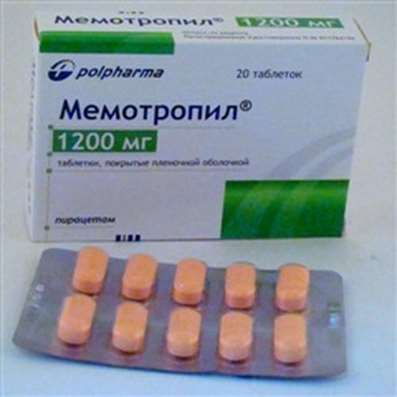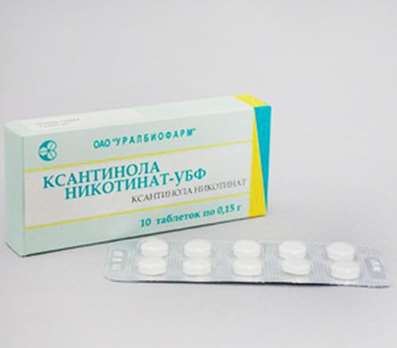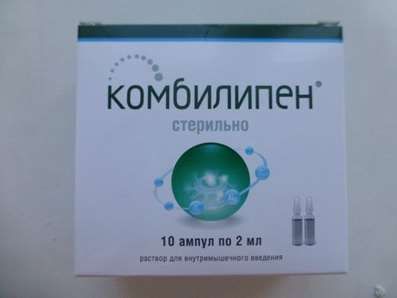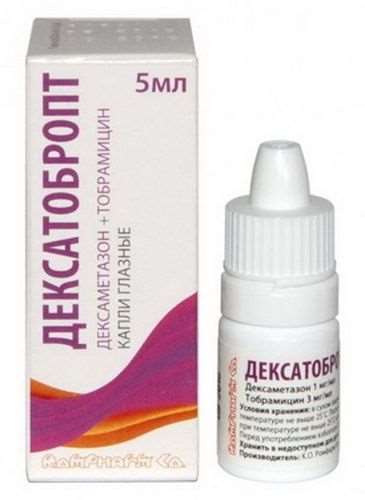Instruction for use: Marevan
I want this, give me price
Dosage form: tablets
Active substance: Warfarinum
ATX
B01AA03 Warfarin
Pharmacological group
Anticoagulants
The nosological classification (ICD-10)
G45 Transient transient cerebral ischemic attacks [attacks] and related syndromes: Ischemic neurological disorders; Acute cerebrovascular insufficiency; Repeated transient cerebral ischemia; Transient ischemic attack; Transient ischemic condition; Transient ischemic attack; Transient ischemic attack; transient ischemia; Transient cerebral ischemic attack; Transient cerebral ischemia; Transient ischemic attacks; Chronic cerebral ischemia; Drop attacks; Transient ischemic attacks; Transient ischemic cerebrovascular accident; Ischemic brain damage; Subclavian steal syndrome
I23 Some current complications of acute myocardial infarction: Complications of myocardial infarction
I23.6 Atrial thrombosis, atrial auricle and ventricle of the heart as a current complication of acute myocardial infarction
I25.2 Transferred last myocardial infarction: Cardiac syndrome; Myocardial infarction; post-MI; Rehabilitation after myocardial infarction; Reocclusion of the operated vessel; Angina postinfarctnaya; Status after myocardial infarction; Status after myocardial infarction; myocardial infarction
I26 Pulmonary embolism: Recurrent thromboembolism of the pulmonary artery; Recurrent pulmonary embolism; Thromboembolism of the branches of the pulmonary artery; Thromboembolism of the lungs; Thromboembolism of the pulmonary artery (PE); Thrombosis of the pulmonary artery; Thromboembolism; Thromboembolism of the pulmonary artery; Thromboembolism; Pulmonary embolism; Thromboembolism of the pulmonary artery and its branches; Thromboembolism of pulmonary vessels; Embolism of the lung; Embolism of the pulmonary artery; Acute massive thromboembolism of the pulmonary artery
I39 Endocarditis and cardiac valve disease in diseases classified elsewhere: Maranthine endocarditis; Libman-Saksa defeat
I48 Atrial fibrillation and flutter: Permanent atrial tachyarrhythmias; Relief frequent ventricular rate during atrial flutter or blink; atrial fibrillation; Paroxysm of atrial fibrillation and flutter; Paroxysm of atrial fibrillation; Paroxysmal atrial fibrillation; Atrial premature beats; Tahiaritmicheskoy atrial fibrillation; Tahisistolicheskoy atrial fibrillation; auricular flutter; Life-threatening ventricular fibrillation; Atrial fibrillation; Chronic atrial fibrillation; supraventricular arrhythmia; Paroxysmal atrial fibrillation and flutter; Paroxysmal fibrilloflutter; Atrial premature beats
I82 Embolism and thrombosis of other veins: Recurrent venous thrombosis; Postoperative thrombosis; Venous thrombosis; Acute venous thromboembolism; Recurrent vein thrombosis; Venous thrombosis; Thrombosis of veins of internal organs; Venous thrombosis; Deep vein thrombosis; Thrombosis of blood vessels; Vascular thrombosis; Thrombosis of veins; Deep vein thrombosis; Thromboembolic diseases; Thromboembolism of veins; Severe venous thrombosis; Embolism; Embolism of veins; Thromboembolic complications
T82.9 Complication associated with cardiac and vascular prosthesis, implant and graft, unspecified
Composition and release form
Sodium warfarin 3 mg
Auxiliary substances: lactose monohydrate, corn starch, gelatin, purified water, magnesium stearate, indigocarmine
In plastic bottles of 30 or 100 pcs .; In a pack of cardboard 1 bottle.
Description of dosage form
Tablets of light-blue color with possible heterogeneity of coloring, flat, with bevelled edge, with dividing risk and code "ORN 17" on one side.
Characteristic
Anticoagulant of indirect action.
Pharmachologic effect
Mode of action - Anticoagulant.
Pharmacodynamics
It blocks in the liver the synthesis of vitamin K-dependent clotting factors, namely, II, VII, IX and X. There are 2 isomers of 4-hydroxycoumarin - R-isomer and S-isomer, the latter more active 5-fold.
In therapeutic doses, the drug reduces the rate of synthesis of coagulation factors by 30-50%, reducing their biological activity.
Optimal anticoagulant effect is observed on the 2-7th day from the beginning of the drug (during this time, circulating already in the blood coagulation factors are excreted from the body).
Pharmacokinetics
Suction. After taking the drug inside the bioavailability of warfarin is more than 90%. Cmax in plasma is achieved within 3-9 hours. Simultaneous food intake slows down absorption, but does not reduce absorption quantitatively.
Distribution. Virtually completely binds to plasma proteins, the content of the free fraction varies from 0.5 to 3%. The apparent volume of distribution (Vd) is approximately 0.14 l / kg.
Penetrates through the placental barrier, it does not excrete with breast milk.
Metabolism. Warfarin is metabolized in the liver with the formation of inactive metabolites with the participation of cytochrome-CYP2C9 (S-isomer) and CYP1A2, CUR1A3 (R-isomer) enzymes.
Excretion. The drug is excreted by the kidneys in the form of inactive metabolites. T1 / 2 S-isomer of 4-hydroxycoumarin is 18-35 h, R-isomer of warfarin is 20-70 h.
Indications for Marevan
Treatment and prevention of deep vein thrombosis and pulmonary embolism;
Secondary prevention of myocardial infarction;
Prevention of thromboembolic complications after myocardial infarction;
Prevention of thromboembolic complications in patients with atrial fibrillation, damage to the heart valves or with prosthetic heart valves;
Treatment and prevention of transient ischemic attacks and strokes.
Contraindications
Hypersensitivity to the components of the drug;
Patients with a high risk of bleeding (von Willebrand's disease, hemophilia, thrombocytopenia, platelet function disorders, hemorrhagic diathesis);
Severe kidney disease;
Severe liver disease;
Obstructive jaundice;
Infective endocarditis;
Exudative pericarditis;
Severe arterial hypertension;
diabetes;
Acute DVS-syndrome;
Conditions associated with a high risk of gastrointestinal or renal bleeding (including previously observed gastrointestinal bleeding, gastric ulcer and duodenal ulcer in the exacerbation phase, diverticulosis, malignant tumors);
Intracranial hemorrhage (including aneurysm of the cerebral arteries), loss of consciousness in the anamnesis;
Transferred or suspected extensive surgical interventions and / or diagnostic procedures for the CNS or ophthalmic operations;
Dementia, psychosis, alcoholism and other conditions in which a complete assessment of the state of the coagulating blood system is difficult with the help of laboratory methods;
I and III trimesters of pregnancy.
Pregnancy and breast-feeding
The drug is contraindicated in the I and III trimesters of pregnancy. The marewan penetrates the placental barrier and has a teratogenic effect (nasal hypoplasia and chondrodysplasia) on the 6th-12th week of pregnancy, and can also cause bleeding in the fetus at the end of pregnancy and during labor. In the second trimester of pregnancy, the drug is only possible if the intended benefit to the mother exceeds the potential risk to the fetus.
Warfarin is not excreted in breast milk. The drug can be used during breastfeeding, but for complete safety it is recommended to refrain from breastfeeding for the first 3 days of taking the drug.
Side effects
From the coagulation system: often (10%) - bleeding. A year of bleeding is observed in about 8% of cases among patients receiving warfarin. Of these, 1.0% is classified as severe (intracranial, retroperitoneal), leading to hospitalization or transfusion of blood components, and 0.25% - as fatal. The most frequent risk factor for intracranial hemorrhage is untreated or uncontrolled arterial hypertension. The likelihood of bleeding rises if MHO is significantly higher than the target level.
On the part of the digestive system: vomiting, nausea, diarrhea; Rarely (<0.01%) is a reversible increase in hepatic enzyme activity, hepatitis.
From the genitourinary system: rarely (<0.01%) - priapism.
Dermatological reactions: rarely (<0.01%) - skin necrosis, vasculitis, reversible alopecia; In isolated cases - a syndrome of purple fingers. Necrosis usually begins with swelling and darkening of the skin of the lower extremities and buttocks, less often in other places. In the future, the lesions become necrotic. In 90% of cases, necrosis develops in women. Lesions are observed from the 3rd to the 10th day of taking the drug. Congenital insufficiency of protein C or S may be the cause of this complication, so it is recommended to start taking low-dose warfarin while simultaneously prescribing heparin for IV. If this complication develops, stop taking warfarin immediately and continue with heparin until the lesions are healed or scarring. The development of the syndrome of purple fingers is typical for men with atherosclerotic diseases. It is assumed that warfarin causes bleeding atheromatous plaques, leading to microemboli. The syndrome is manifested by symmetrical purple lesions of the skin of the fingers and the sole of the feet, accompanied by burning pains. After stopping the use of warfarin, these symptoms gradually disappear.
Allergic reactions: rarely (<0.01%) - skin rash.
Other: calcification of the trachea.
Interaction
With simultaneous appointment with antiepileptic and anti-TB drugs, the effect of warfarin is enhanced.
With simultaneous administration with amiodarone, metronidazole, the effectiveness of warfarin decreases.
With the simultaneous administration of warfarin with drugs that affect platelet levels and primary hemostasis (including acetylsalicylic acid and other NSAIDs, with the exception of selective COX-2 inhibitors, clopidogrel, ticlopidine, dipyridamole, penicillin group antibiotics in large doses), the risk of developing Heavy bleeding.
With concomitant administration, anabolic steroids, azapromine, erythromycin and some cephalosporins increase the effect of warfarin, reducing the vitamin K-dependent synthesis of clotting factors.
With the simultaneous administration of laxatives, the effect of warfarin is enhanced.
With the simultaneous administration of warfarin enhances the effect of oral hypoglycemic drugs-derivatives of sulfonylureas.
Strengthening the action of warfarin is observed when it is used together with allopurinol, amiodarone, azapropazone, azithromycin, interferons alpha and beta, bezafibrate, vitamins A and E, gemfibrozil, grepafloksatsinom, dextropropoxyphene, tyrosine, digoxin, disulfiram, zafirlukast, indomethacin, ifosfamide, itraconazole , karboksiuridinom, ketoconazole, clarithromycin, clofibrate, codeine, lovastatin, metolazone, methotrexate, metronidazole, miconazole (in t. h. in the form of gel for oral), nalidixic acid, norfloxacin, ofloxacin, omeprazole, oxyphenbutazone, paracetamol (particularly after the 1 -2 weeks of continuous use), piroxicam, proguanidom, propafenone, propranolol, influenza vaccine, roxithromycin, simvastatin, sulfafurazolom, sulfamethizole, sulfamethoxazole-trimethoprim, sulfaphenazole, sulfinpyrazone, sulfofenuronom, sulindac, steroid hormones (anabolic and / or androgenic), tamoxifen, tegafur, tetracyclines, thienyl acid, trastuzumab, troglitazone, phenylbutazone, fenofibrate, fluconazole, fluorouracil, flutamide, fluvastatin, quinine, quinidine, chloral hydrate, celecoxib, cefamandole, cephalexin, tsefmenoksimom, tsefmetazolom, cefoperazone, cefuroxime, cimetidine, ciprofloxacin, cyclophosphamide, erythromycin , Etoposide.
The weakening of the action of warfarin is observed when combined with azathioprine, barbiturates, valproic acid, ascorbic acid, griseofulvin, dicloxacillin, disopyramide, isoniazid, carbamazepine, cloxacillin, mercaptopurine, mesalazine, mitotanom, nafcillin, primidone, rifampicin, rofecoxib, spironolactone, trazodone, phenobarbital, Chlordiazepoxide, chlorthalidone, cyclosporin.
Drugs of some medicinal plants can also enhance the effect of warfarin: for example ginkgo (Ginkgo biloba), garlic (Allium sativum), angelica sinensis (Angelica sinensis), papaya (Carica papaya), sage (Salvia miltiorrhiza); And reduce: for example, ginseng (Panax ginseng), St. John's wort (Hypericum perforatum). It is not recommended to simultaneously prescribe warfarin and any preparations of St. John's Wort, as using this combination, the intensification of warfarin may persist for 2 weeks after stopping the intake of St. John's Wort. If this combination is prescribed, stop taking medications and monitor the INR dynamically. With the withdrawal of St. John's wort, it is possible to increase INR.
It should be borne in mind that eating a food rich in potassium weakens the effect of warfarin. Food rich in potassium include the following products: green amaranth, avocado, broccoli, brussels sprouts, cabbage, canola oil, sheet of Chaillot, onion, coriander (cilantro), cucumber peel, chicory, kiwi fruit, lettuces, mint , Green mustard, olive oil, parsley, peas, pistachios, red algae, spinach greens, spring onions, soybeans, tea leaves (but not a drink), turnip greens, watercress.
At the same time, the use of tonic drinks containing quinine increases the effect of warfarin.
Dosing and Administration
Adults with normal body weight and INR less than 1.2 are prescribed 10.5 mg of warfarin for 3 days. The dose is then calculated according to the table below, based on the measurement of MHO on the 4th day of therapy.
In outpatient settings and in patients with hereditary deficiency of protein C or S, the recommended initial dose of warfarin is 4.5 mg for 3 days. The dose is then calculated according to the table below, based on the measurement of INR on the 4th day of therapy.
For elderly patients, patients with low body weight and INR more than 1.2 or with concomitant diseases, or receiving any medications that affect the effectiveness of anticoagulant therapy, the recommended initial dose of warfarin is 4.5 mg for 2 days. The dose is then calculated according to Table 1, based on the measurement of INR on day 3 of therapy.
Table 1
Calculation of the dose of Warfarin versus INR
| Day | INR | dose of Warfarin, mg/day |
| 1 | - | 10,5 (4,5*) |
| 2 | - | 10,5 (4,5*) |
| 3 | <2,0 | 10,5 (4,5*) |
| from 2,0 to 2,4 | 6 | |
| from 2,5 to 2,9 | 3 | |
| from 3,0 to 3,4 | 1,5 | |
| >4,0 | Put through 1 day | |
| 4–6 | <1,4 | 10,5 |
| from 1,4 to 1,9 | 7,5 | |
| from 2,0 to 2,4 | 6 | |
| from 2,5 to 2,9 | 4,5 | |
| from 3,0 to 3,9 | 3 | |
| from 4,0 to 4,5 | Put through 1 day, further 1,5 | |
| >4,5 | Put through 2 äíÿ, further 1,5 | |
| 7 | from 1,1 to 1,4 | Week dose of Warfarin increased on 20% |
| from 1,5 to 1,9 | Week dose of Warfarin increased on 10% | |
| from 2,0 to 3,0 | keep dose | |
| from 3,1 to 4,0 | Dose decline on 10% | |
| > 4,5 | Skip until the INR drops below 4.5, then continue treatment with a dose reduced by 20% |
When prescribing the drug to children under 18 years of age, dynamic monitoring is recommended. Doses are selected in accordance with Table 2.
Table 2
Doses of Warfarin for children under 18 years of age
| 1 day | INR value of 1.0-1.3, the initial dose is 0.2 mg / kg body weight |
| Days 2 to 4, if the value of INR: | Actions: |
| From 1 to 1.3 | repeat the initial dose |
| From 1.4 to 1.9 | 50% of the initial dose |
| From 2.0 to 3.0 | 50% of the previous dose |
| From 3.1 to 3.5 | 25% of the previous dose |
| > 3.5 | to stop the drug before reaching the INR of less than 3.5, then resume treatment with a dose of 50% of the previous. |
| Supportive dose with INR value: | Actions (weekly dose): |
| From 1 to 1.3 | to increase the dose by 20% |
| From 1,4 to 1,9 | to increase the dose by 10% |
| 2.0 to 3.0 | unchanged |
| From 3.1 to 3.5 | to reduce the dose by 10% |
| > 3.5 | to stop the drug before reaching the INR of less than 3.5, then resume treatment with a dose that is 20% less than the previous one |
- 5 days before surgery, if INR> 4.0;
- 3 days before the surgery, if the INR is from 3.0 to 4.0;
- 2 days before surgery, if the INR is 2.0 to 3.0.
It is recommended to determine INR in the evening before the operation and with INR less than 1.8, 0.5-1.0 mg of vitamin K should be administered. If necessary, infusions of unfractionated heparin or low-molecular heparin on the day of operation should be performed and then continue with the introduction of low-molecular heparin during 5-7 days after the operation. In the future, it is necessary to return to the appointment of warfarin.
When performing small surgical interventions, it is necessary to return to taking warfarin on the same day. With voluminous surgical interventions, taking warfarin should be resumed on the day of transfer of the patient to enteral nutrition.
Overdose
Treatment: for unprofitable bleeding, it is sufficient to stop taking the drug until the target INR value is reached. In case of development of severe bleeding - the introduction of vitamin K IV and activated carbon, a concentrate of coagulation factors or fresh frozen plasma. It should be borne in mind that resistance to warfarin develops within 2 weeks, so if you need to continue using warfarin, you should avoid prescribing vitamin K in high doses. The scheme for treatment of overdose is presented in Table 3.
Table 3
Treatment scheme for an overdose
| INR | Recommendations |
| In case of minor bleeding | |
| <5,0 | Skip the next dose of warfarin and continue taking in lower doses when the therapeutic value of INR is reached |
| 5,0–9,0 | Skip 1-2 doses of warfarin and continue taking at lower doses when the therapeutic value of INR is reached or skip 1 dose of warfarin and prescribe vitamin K at doses of 1-2.5 mg orally |
| >9,0 | Stop taking warfarin, prescribe vitamin K at doses of 3.0-5.0 mg orally |
| Discontinuation of the drug is indicated | |
| 5,0–9,0 | Stop taking warfarin and prescribe vitamin K in doses of 2-4 mg orally (24 hours before the planned operation) |
| > 20.0 orseverebleeding | Assign vitamin K at doses of 10 mg IV drip. Transfusion of concentrate factors of prothrombin complex or fresh frozen plasma, or whole blood. If necessary, repeated administration of vitamin K every 12 hours. |
Special instructions
When administering warfarin, it is necessary to carry out dynamic monitoring of INR.
The target value of INR for oral anticoagulant therapy for the prevention of thromboembolic complications in patients with prosthetic heart valves is 2.5-3.0, in other cases 2.0-3.0.
If it is necessary to quickly achieve a therapeutic effect, treatment should begin with the administration of heparin; Then within 5-7 days to carry out combined therapy with heparin and warfarin until the target value of MHO is retained for 2 days.
To avoid necrosis of the skin, patients with hereditary deficiency of antithrombotic protein C or S should be administered a heparin prior to the administration of warfarin, the initial dose of which should not exceed 4.5 mg. The administration of heparin should continue for 5-7 days.
In the case of individual resistance to warfarin, 5 to 20 initial doses of warfarin are necessary to achieve a therapeutic effect. If the use of warfarin in such patients is ineffective, other causes should be excluded (such as simultaneous taking of warfarin with other medicines, inadequate diet, laboratory errors).
Caution is advised to prescribe the drug to elderly people. The synthesis of coagulation factors and hepatic metabolism in such patients is reduced, as a result of which the effect of warfarin may be excessive.
When the drug is prescribed for patients with fever, hyperthyroidism, decompensated heart failure, alcoholism with concomitant liver damage, moderate hepatic insufficiency, it is possible to increase the effect of warfarin.
When the drug is prescribed for patients with hypothyroidism, the effectiveness of warfarin may decrease.
When appointing the drug to patients with renal failure, nephrotic syndrome should be borne in mind that with these diseases increases the level of free fraction of warfarin in the blood plasma. This can lead (depending on the concomitant diseases) both to enhance and to reduce the effect.
Patients receiving warfarin should be given paracetamol or opioid analgesics as analgesics.
If it is necessary to use the drug in children, it is recommended to crush the tablet to a powder.
Storage conditions of the drug Marevan
In the dark place at a temperature of no higher than 25 ° C.
Keep out of the reach of children.
The shelf life of the drug Marevan
3 years.
Do not use beyond the expiration date printed on the package.

 Cart
Cart





